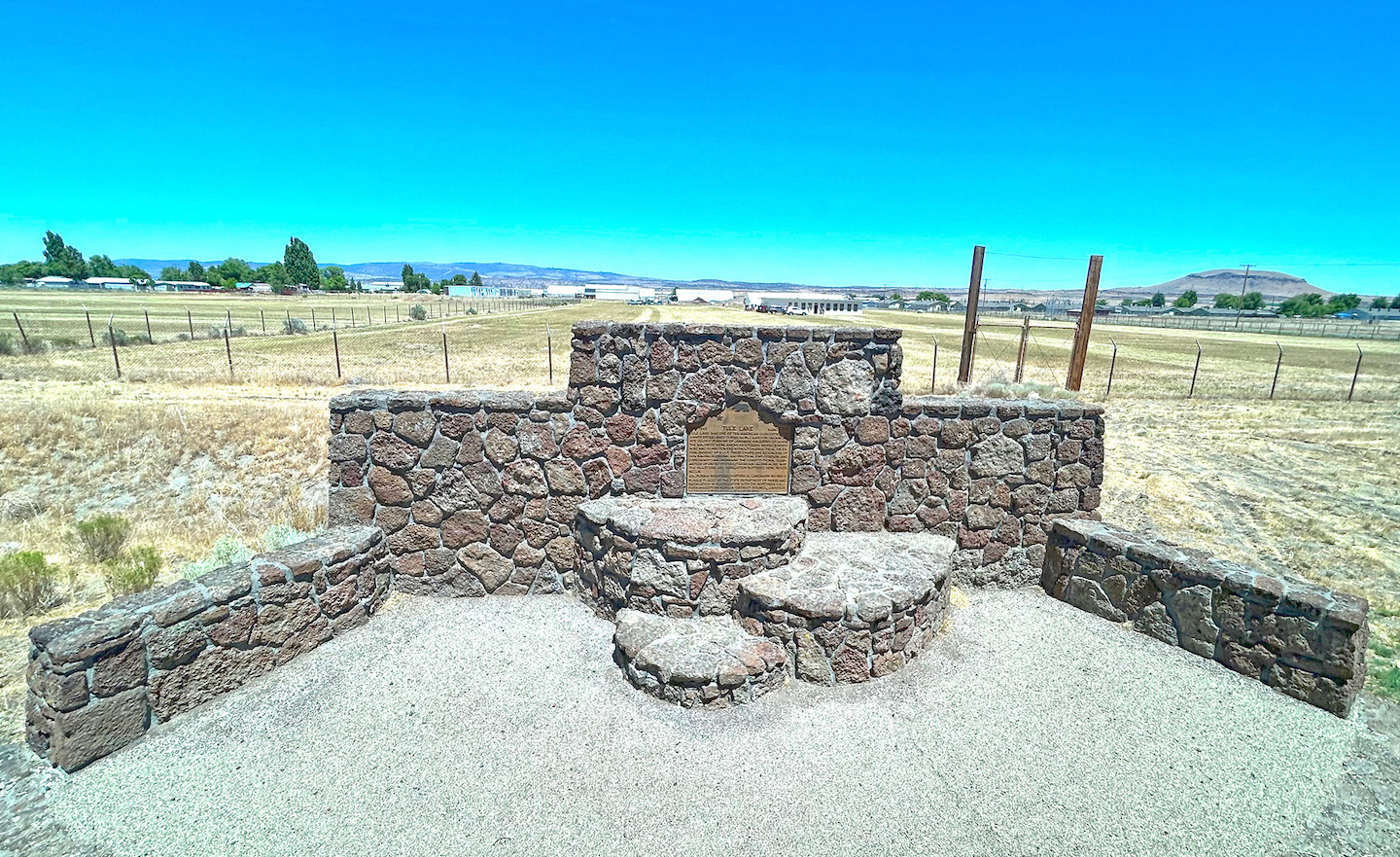
The Tule Lake Segregation Center memorial (Photo: Rob Buscher)
Part 2 of this two-part series explores
the importance continuing to build solidarity with other
historically marginalized peoples.
By Rob Buscher, P.C. Contributor
Following my trip to attend the Jerome/Rohwer pilgrimages, I next set forth on my journey to Tule Lake. First, I spent a few nights visiting with my Nisei Obaachan, who lives in Belmont, Calif. Coinciding with the week of July 4, our conversations frequently delved into the reality that this country has failed to live up to the values it espouses on the subjects of liberty, equality and the pursuit of happiness. Sharing some of what I had experienced in Arkansas and the affinity I felt toward Black Americans in the former Jim Crow South, Obaachan, who herself had been involved with the Redress Movement, expressed her genuine hope that Black Americans could one day receive reparations.
READ PART 1 HERE.
She also shared a childhood memory growing up in Utah when her Issei father would often comment on the deplorable situation facing children in the Native American boarding school they would sometimes drive past. It seems the interconnectedness of these various historically marginalized groups resonated even with Issei like my great-grandfather, who must have come to see themselves as part of a longer continuum of racial oppression in the United States.
Early on the morning of July 5, I took a taxi to San Jose Betsuin, where I departed on the seven-hour bus ride to the Tule Lake Pilgrimage. We stopped at the North Berkeley BART station to pick up additional pilgrims before embarking on the journey to Klamath Falls, Ore., where we would be staying for the duration of the pilgrimage.
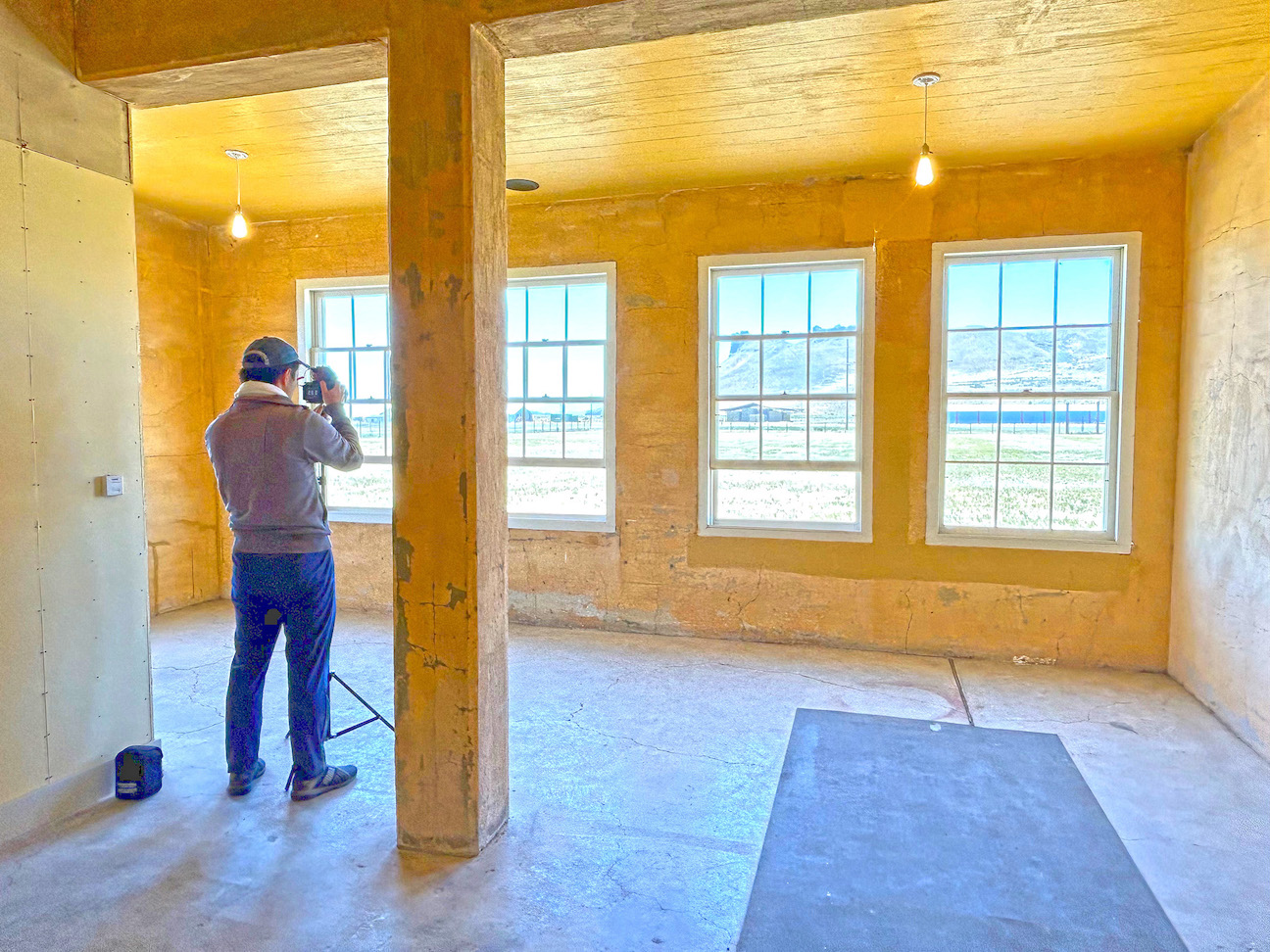
Filmmaker Ken Ochiai captures the interior of the stockade jail. (Photo: Rob Buscher)
Upon arrival at the Oregon Institute of Technology in Klamath Falls, pilgrims checked into their accommodations in the college dormitory. Given the 105-degree weather predicted for the entirety of our pilgrimage stay, the air-condition-less dormitory evoked a degree of discomfort, yet a mere fraction of what incarcerees experienced.
The opening ceremony commenced in the college auditorium with a stirring performance from Tule Lake Taiko — an amalgamation of all the taiko players in attendance. Tule Lake Pilgrimage Committee Chair Barbara Takei then thanked the many individuals who contributed to the pilgrimage’s success.
One thing she said that particularly resonated with me was the quote, “Kill the savage to save the man,” typically used to reference the Indian Boarding School Movement. In this context, she used it to suggest that our Japanese culture was forcibly assimilated out of our community by the wartime incarceration and that we should view this pilgrimage as an intentional act of reclamation.
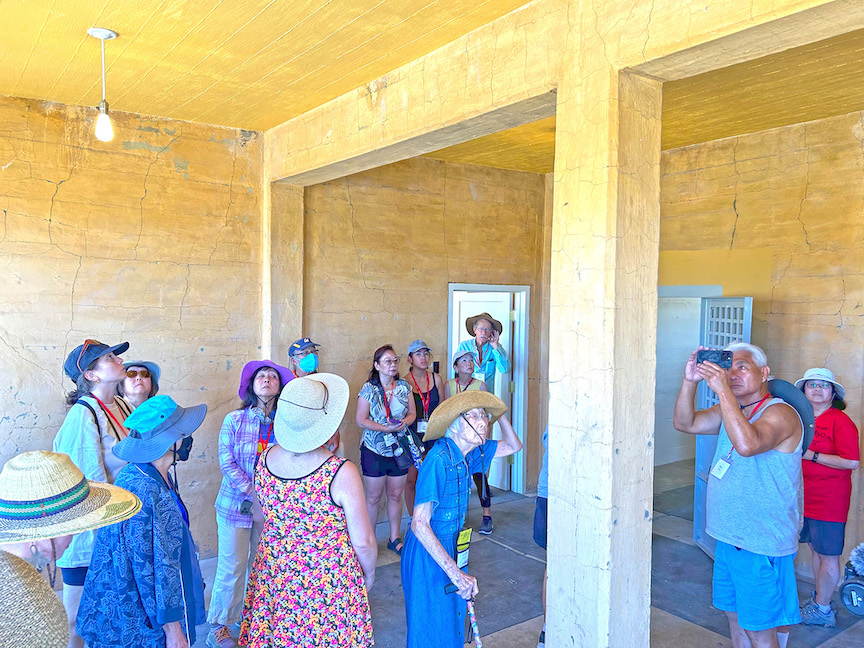
Pilgrims tour the interior of the stockade jail. (Photo: Rob Buscher)
That next morning, we drove 36 miles back across the California border to visit the Tule Lake National Monument. Like Manzanar, Minidoka and now Amache, Tule Lake is administered by the National Park Service. However, as a National Monument, it has far fewer resources than the National Historic Site designation granted to these other camps. Additionally, because of the complex history of Tule Lake Segregation Center and the uniquely terrible treatment that incarcerees endured there, the site carries an emotional weight unlike any of the other former confinement sites I have visited.
From the beginning, the conditions of the camp were below average, even for the WRA, with frequent disagreements between the camp administrators and incarcerees. When the so-called Loyalty Questionnaire was administered, Tule Lake had the highest number of No-No respondents, which is why it was selected as the segregation center.
On our bus ride over, one incarceration survivor shared memories of her family’s journey from Heart Mountain to Tule Lake by train. On their way from Wyoming, the train stopped briefly in their hometown in Washington state. Local friends and residents of the town gave the incarcerees bushels of apples to take with them. She recalled crying so much that they couldn’t eat, as they told other passengers about the town and pointed out their former school, church and residences.
We disembarked onto the grounds of Tule Lake, so named for the dry lake bed that once filled the area. Kicking around the dusty ground, it is common to find shells from aquatic life that once inhabited the lake, which incarcerees often repurposed into jewelry and other craft items.
Aside from the small memorial plaque detailing a brief history of Tule Lake, the only building standing from the wartime is the stockade jail. Recently refurbished and open to the public for the first time at this year’s pilgrimage, I had the opportunity to tour the jail building. Standing by myself inside one of the jail cells, I was struck by how small the space already felt and imagined how claustrophobic it would feel with three other cellmates and the door closed.
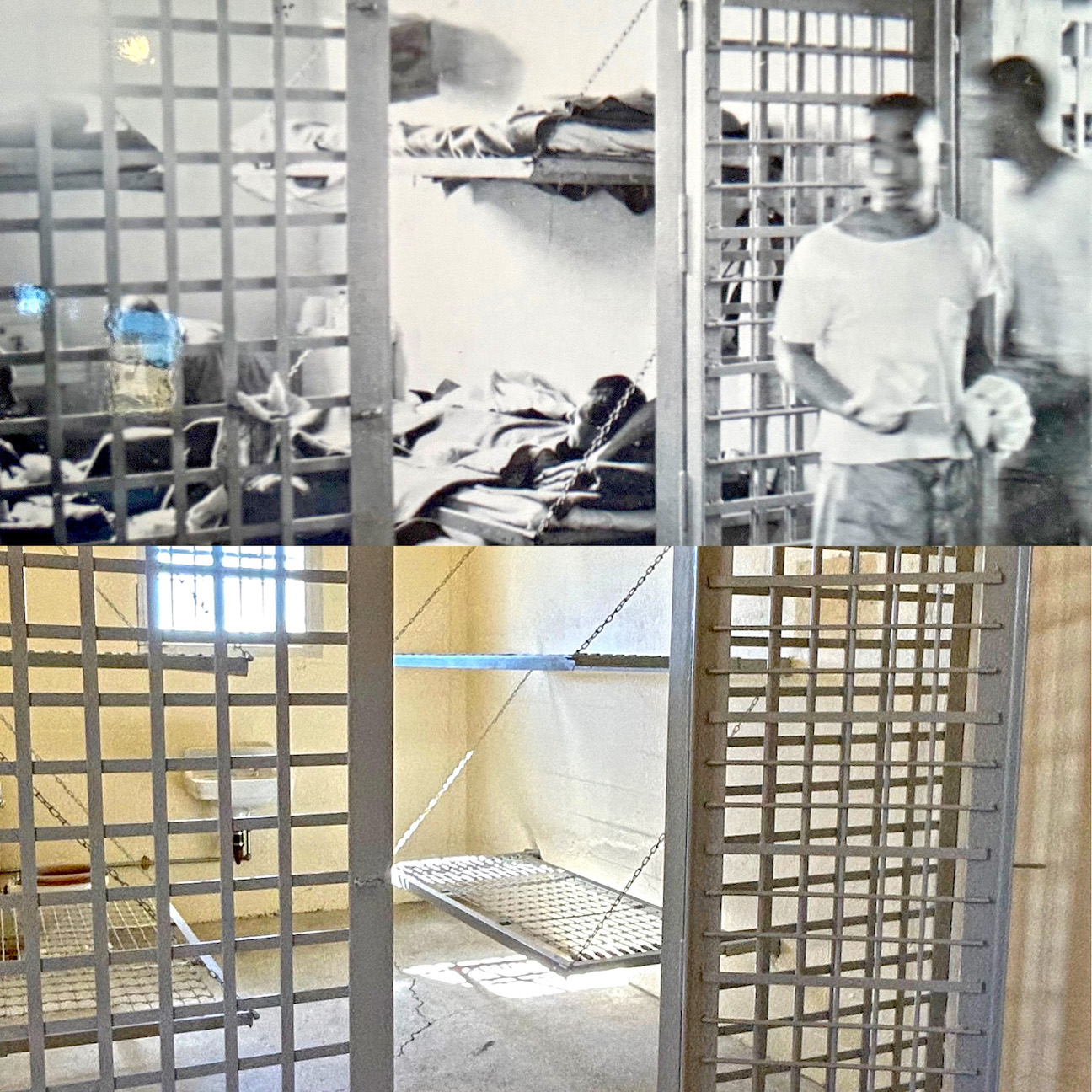
The Tule Lake Stockade Jail during World War II (top) and today (Photo: Rob Buscher)
I also marveled at the pencil graffiti written by incarcerees at various stages of the incarceration. Some simply wrote their name and date; others kept a line tally of how many days they were imprisoned; one even wrote poetry in kanji characters. Two brief passages written in English sent chills down my spine. The first read, “Show me the way to go home,” and the other, “Don’t kill me!”
While exploring the jail, I thought of my late Nisei friend Ed Kobayashi, whose father, C. Y. Kobayashi, was among the protest leaders imprisoned in the stockade. For many decades, Ed did not speak about his family’s experience at Tule Lake, but after Konrad Aderer’s 2017 film “Resistance at Tule Lake,” he spoke regularly about his father’s ordeal.
C. Y. was somewhat of an amateur poet who composed several tanka verses while imprisoned in the stockade, which my mother helped Ed to self-publish in a small book shortly before his death. While our own cousins did not face the indignity of being jailed in the stockade, knowing the Kobayashi family’s relationship to the space gave this experience great emotional weight.
After this emotionally charged experience, I rejoined the approximately 400 pilgrims under a large tent constructed in front of the stockade jail where Rev. Duncan Ryuken Williams led a memorial service.
At the start of his remarks, Williams implored us to hold the memories of both the oldest and youngest who perished at Tule Lake. Seventy-eight-year-old strawberry farmer Masao Nakano was the oldest, and the youngest was an unnamed infant who died an hour after birth.
Holding these two at the center along with others who perished at Tule Lake, Williams, in his Soto Zen Buddhist tradition, offered the following wisdom on the purpose of such memorials: “We console their spirits with remembrance, they console us with resilience.”
Following his remarks, Williams led a brief chant of the nembutsu, then an artist collective of Tule Lake descendants calling themselves the “Sansei Granddaughters” carried a shimenawa rope in procession to the front of the tent. Adorned with WRA name tags styled after those that incarcerees were made to wear on evacuation day, the shimenawa contained each of the names of those who perished at Tule Lake. The memorial service then concluded with organizational representatives and other pilgrims giving incense offerings at the butsudan altar at the front of the tent.
After the memorial, we had a brief lunch break at the nearby fairgrounds before embarking on a driving tour of the residential blocks that are publicly accessible. Most of the Tule Lake camp is inaccessible to pilgrims because an airfield was built for crop dusting planes in the postwar era.
Located in the middle of the former Tule Lake site, the airstrip prevents survivors and descendants from accessing much of the area where residential barracks used to exist. Other sections are inaccessible because they house temporary residences for migrant laborers employed by the state agricultural department.
Our bus monitor shared that when the airstrip was being built, workers dug the dirt out of the former site where the cemetery was once located to use as fill when evening out the airfield. At the time, some remains were still in the ground. Despite pleas from incarceration survivors and descendants, the landowner refuses to let archeologists survey the area.
Next, we drove to the site of the old post office building where 30-year-old Nisei James Okamoto was shot to death by a camp guard. Okamoto worked as a truck driver, transporting materials from the farm to other sections of camp. After some sort of misunderstanding at the camp gate, the soldier commanded Okamoto to get out of the truck. When he did, the soldier tried to hit him with his rifle butt. Okamoto tried to shield himself from the blow, and the soldier fired in retaliation, hitting him in the chest. Other drivers were told to “get the hell out of here!” and hid behind the old post office building.
The final stop on our site tour was Camp Tule Lake, originally built as a Civilian Conservation Corps camp during the New Deal program. It was converted into an isolation center where incarcerees from other camps were brought in as strikebreakers in the aftermath of the 1943 Tule Lake farm strike resulting from a farm truck accident leading to the death of one inmate and injuring of five others.
Incarcerees from Poston and Topaz who were kept here, isolated from the general camp population, were unaware of the strike. Tuleans began organized protests in the camp, to which Project Director Raymond Best responded by calling in the military, who then stormed the camp with tanks and jeeps with machine gun mounts and tear gassed the protesters. Shortly after, the stockade was built, where protest leaders and other “troublemakers” were separated from their friends and families by a bullpen-style barbed-wire fence and jail building.
While I have studied Tule Lake fairly extensively, hearing these disheartening stories in context at the site where they had taken place gave greater understanding to the uniquely traumatic experiences of Tule Lake survivors and descendants.
The bus ride back to Oregon was largely quiet as pilgrims processed the many difficult stories that were shared with us that day. I was able to share my thoughts with fellow pilgrims during the Tsuru for Solidarity Healing Circles facilitators meeting that followed, which helped codify the many significant experiences we shared at the site.
The last full day of the pilgrimage began with a screening of Sharon Yamato’s new documentary short “One Fighting Irish Man,” about ACLU lawyer Wayne Collins, who fought tirelessly to ensure that Tule Lake prisoners who renounced their U.S. citizenship could have it reinstated in the postwar era. For the post-film discussion, Yamato was joined by Wayne Collins Jr., son of the film’s main subject, and George Takei.
Following a rousing Q & A discussion, author/filmmaker Frank Abe led a second panel discussion on literature of the incarceration, focusing specifically on Japanese language writing done by Issei and Kibei at Tule Lake.
Abe was joined by author Nancy Kyoko Oda, whose father was the highest-ranking judo practitioner at Tule Lake. He was arrested and sent to the stockade, where he kept a journal of life from the prison within a prison.
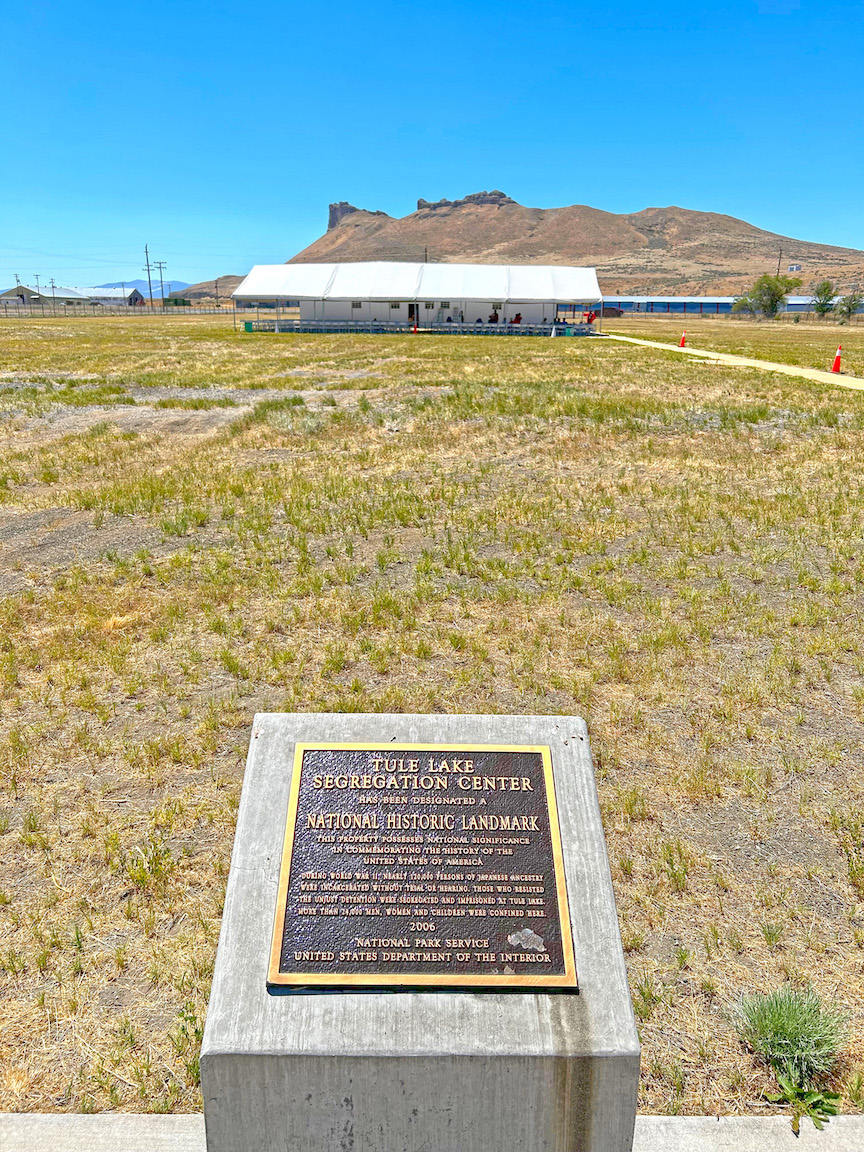
The Tule Lake historic marker (Photo: Rob Buscher)
Oda and his fellow prisoners endured immense suffering in the stockade jail’s deplorable conditions. Stockade prisoners were fed only one tablespoon to one teaspoon of rice each day. The men began eating snow to fill their bellies, with one defiantly claiming, “We are filled by the Japanese spirit.”
Oda himself gave powerful testimony in an excerpt from one passage that read, “I thought the U.S. was a country of laws like Japan. Every day they treat the Japanese like this, they do dishonor to the country.” Oda’s diary was nearly confiscated when he was released back into the general prison population, which he had hid in his hat. Written in Japanese, he told the soldier it contained quotes from a religious scripture and surprisingly was allowed to keep it.
The final panelist was Andrew Leong, professor of English at the University of California, Berkeley, who has been leading efforts to translate the Japanese language literary magazine Tessaku, which was published at Tule Lake.
Abe said during the panel discussion, “Japanese language sources such as these are perhaps the final frontier of incarceration research.” Given the general lack of Japanese language ability in Sansei-plus generations, there is a significant research gap that stands to be filled by greater efforts to translate and interpret the writings of Japanese speakers in camp.
After a long bus ride back to San Jose the next day, I flew back to Philadelphia. The next day, July 9, was the first event of the JACL National Convention that we hosted in Philadelphia, a group trip to the ballpark to watch the Phillies take on the Los Angeles Dodgers.
As I sat there watching the baseball game with my nearly 4-year-old son, Mateo, in a crowd of JACL convention attendees, I took stock of the multitude of experiences from my recent travels.
I don’t know when or how I will introduce the wartime incarceration to Mateo, but I wonder how he will interpret these stories in his own life and times. What I do know is that we must continue preserving these sites so that future generations like my son’s will get their own opportunities to make meaning of these tragic events that are so central to our community’s collective history. And in doing so, continue to build solidarity with other historically marginalized peoples.
To read Part 1 of this series, see the Pacific Citizen’s Aug. 23-Sept. 5, 2024, issue.



